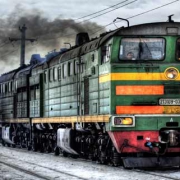The wrath of the Tsar
/0 Comments/in Long Articles/by Rudolf HuberEvery group of people has its stories, fables, and prejudices. That’s no different for planet gas. The story of Russia’s gas weapon wielded to achieve political objectives is its most pervasive staple. I have discussed it with many professionals and amateur observers alike ever since I joined in.
Russia’s other options for geopolitical situations are often rather limited. It is seductive to think that having the hand on the gas tap has some actual clout on the world stage.
But does it?
Some days ago I had a conversation with a friend who recently returned from a trip to Russia. We talked about many things and all of a sudden, it blurted out of him. He said that there are pervasive rumors in Moscow that Putin will use his gas clout to punish Americans for their opposition to North Stream 2. This and a host of other things they deem to be a slight to Russias pride.
He went on saying that Russia will send even more gas to the European market. He wants so much gas there that there would be no storage and no pipeline capacity left anymore to place US LNG.
I have heard many such stories before so I did not react immediately. But then, the same rumor was repeated by some of the most illustrious names in the European gas scene. Reason enough for me to look at how solid this might be.
First, the situation in Russia. I have explained it many times before but under the uniform surface of Russian gas exports, a radical change is about to play out for real in a very few years.
Russian legacy gas fields such as Urengoy and Yamburg that have provided the bulk of Russian gas for many decades. Now they are very close to depletion. Years ago I saw the numbers 2022 and 2024 respectively as their depletion dates. Like all figures coming from Russia, this must, of course, be consumed with a hefty shovel full of salt but one thing is clear. Those fields were developed in the Sixties and after half a century of gas production, they obviously must run of gas one day.
There are many other gas fields producing in Russia but those two always stood out. They are gargantuan so losing them will be felt a good deal in the Russian gas balance.
There are also plenty of new fields that are either under development (Yamal) or still to be developed (Shtokman). There is no shortage of world-class reserves. But, those new reserves need fresh project development, fresh funding and hence new CAPEX that needs to be amortized. The old legacy fields don’t have this problem as with the collapse of the Soviet Union, their balance sheets got cleaned out. For decades Russia had gotten used to really cheap gas.
The gas from the new fields is far from being cheap gas. As pressure drops at the old fields, the free gas flow that had subsidized the expensive gas flow so far will be gone. Playing with gas streams will carry a pretty steep price in the future.
But I have beaten this horse to death in the past.
Secondly comes the notion that because of the Power of Siberia pipeline, Putin will be able to play Europeans off against China in the future. I can make this short. There is no practical connection to transport large volumes of gas from Russians West to Russias east and vice versa. Power of Siberia is supplied by fields that cannot deliver into Europe. Europe is fed by fields that cannot deliver to China. So, this is a funny theory at best – but no more.
The changing cost structure of Russian gas over the next few years is bad enough for them. Looked at from the vantage point of today’s oversupplied gas and LNG markets, this looks very much like a death curse.
I have gone deep into the various reasons for this in the past so check my blog for more analysis here. Coupled with the changing gas feed situation and geopolitics, this becomes a toxic brew for Russia.
Right now, Russia exports more gas to Europe than ever before. The reason is simple. It has a lot of gas to export as some of the new Yamal fields are already producing and the old legacy fields are still producing. One comes on top of the other. As depletion in gas fields is rather sudden and not drawn out like in oil, there will be a period of a few months when the old feed rapidly vanishes.
Imagine Russias gas production picture a bit like a straight line with a bump in the middle. This is a theory. It means that new fields are developed and when the old fields are gone, the new fields will have picked up the slack.
Will this work smoothly? Your guess. But reality never works as smoothly as projections suggest. Let’s take a guess. I suggest that when the legacy fields are gone, total gas production after that event will be lower than before Yamal development started. Do I know that for certain? Nope. It’s my guess so take it with a more than a grain of salt. You have been warned.
One thing I know for certain though is that the new gas feed will have a very different cost structure. Those are some darn expensive Arctic fields to develop. The old fields were a windfall Russia could feast on so far. No more.
So, the free gas goes away and only the expensive gas is left to use and to export. Its easier to play around with free gas. By that moment, Russia has definitely lost its crown for the cheapest gas feed. It will have to compete on the market with others that will best them more often than not. And it won’t always win the cost stack game too.
If Putin wants to keep LNG out of Europe, he needs to plug the market. He can only do so if he reduces prices to the bone and less. European gas prices are already rock bottom and force-feeding from Russia will lower them again.
But we are not quite there yet. Right now, Russia takes the hit for the high cost of developing Yamal and all the infrastructure that goes with it like North Stream 2 on the chin. It does so in a market that is a pain to anyone, not only them. But at this moment, it still has the quasi-free gas flowing from the legacy fields. As long those are here to play with, this game sucks but its not absolutely deadly yet. There is still leverage – at least theoretically. And they can skewer the books with the free feed.
When the legacy gas eventually goes away and the market is still as it is now, Russias gas export becomes a net drain to its budget as it won’t be able to cover costs anymore.
That will be true for many others and also for LNG. But LNG has potential market openings that pipeline gas can only dream of.
Russias situation is difficult – and that’s probably an understatement. Threatening others as a consequence will raise eyebrows – for a moment. But it won’t do anything to solve the conundrum.














Leave a Reply
Want to join the discussion?Feel free to contribute!